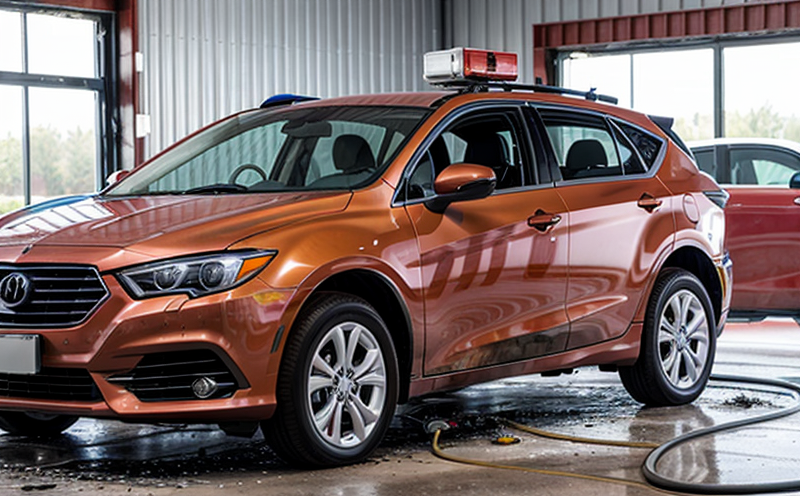Smoke Emission Testing of Automotive Interior Materials
The testing of smoke emission from automotive interior materials is a critical aspect of ensuring fire safety in vehicles. This service involves evaluating how much smoke and gaseous emissions are produced by these materials under specified conditions, which helps manufacturers understand the potential for fire hazards during an ignition event.
Automotive interiors consist of various materials such as fabrics, foams, plastics, and adhesives that can contribute to smoke generation. The primary goal is not only to minimize the amount of smoke produced but also to ensure that any emissions are non-toxic and do not compromise air quality in a confined space like an automobile cabin.
The testing procedure typically involves exposing samples of these materials to controlled heat sources, simulating conditions similar to those found during a fire. The apparatus used captures both the volume and composition of the emitted smoke. Compliance with international standards is essential for ensuring that products meet regulatory requirements and provide adequate protection for occupants in case of a fire.
For accurate results, it's important to follow strict specimen preparation guidelines provided by relevant standards organizations such as ISO or ASTM. This includes cutting samples into standardized sizes and shapes before placing them on the testing apparatus. Proper sample conditioning is also crucial; this may involve conditioning the material at specific temperatures over a defined period prior to testing.
The data collected during smoke emission tests provides valuable insights into how different materials perform under stress conditions, helping R&D teams make informed decisions about material selection and design modifications aimed at improving overall vehicle safety. By focusing on reducing harmful emissions while maintaining structural integrity and comfort levels inside the car, manufacturers can create safer vehicles that comply with global regulations.
Smoke emission testing plays a vital role in preventing serious health issues caused by exposure to toxic fumes during fires, making it an indispensable part of automotive manufacturing processes today. As technology advances and safety standards evolve, so too does our understanding of how best to protect passengers from potential dangers within the vehicle environment.
Applied Standards
| Standard Name | Description |
|---|---|
| ASTM E662-18 | Determination of Smoke and Gaseous Emissions from Plastics, Rubber, Fibers, Fabrics, Textile Products, and Other Organic Materials in a Controlled Burn Apparatus. |
| ISO 5439:1997(E) | Determination of Smoke Density Produced by Various Classes of Building Materials in a Controlled Burn Apparatus |
| EN 455-2:2006+A2:2018 | Smoke and Gaseous Emissions from Textiles in a Controlled Burn Apparatus. |
International Acceptance and Recognition
The results of smoke emission tests conducted according to these international standards are widely accepted across many countries around the world. Regulatory bodies such as the National Highway Traffic Safety Administration (NHTSA) in the United States and Transport Canada recognize these test methods for their accuracy and reliability.
Manufacturers who adhere to these testing protocols can assure themselves that they are meeting global safety requirements, thereby enhancing customer trust and satisfaction. Additionally, compliance with recognized international standards often simplifies market access by reducing the need for additional certifications in different regions.
Competitive Advantage and Market Impact
- Pioneering innovation in smoke emission testing can set a company apart from competitors.
- Meeting or exceeding strict industry standards positions companies as leaders in safety-conscious practices.
- Enhances brand reputation among consumers who prioritize product safety above all else.
- Achieving compliance early on allows firms to enter new markets more quickly and efficiently.
The ability to demonstrate robust testing procedures backed by internationally recognized standards can significantly enhance a company's competitive position in the automotive industry. By prioritizing fire safety through rigorous testing, companies signal their commitment to producing high-quality products that meet or exceed regulatory expectations.





